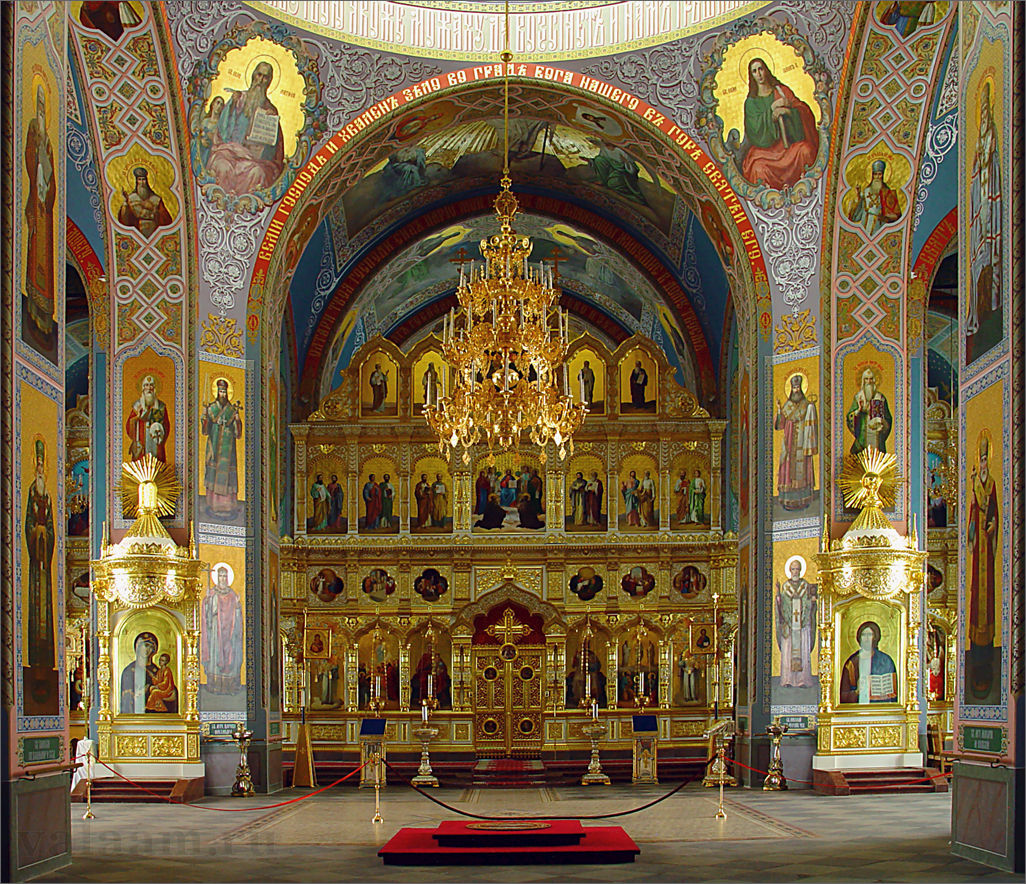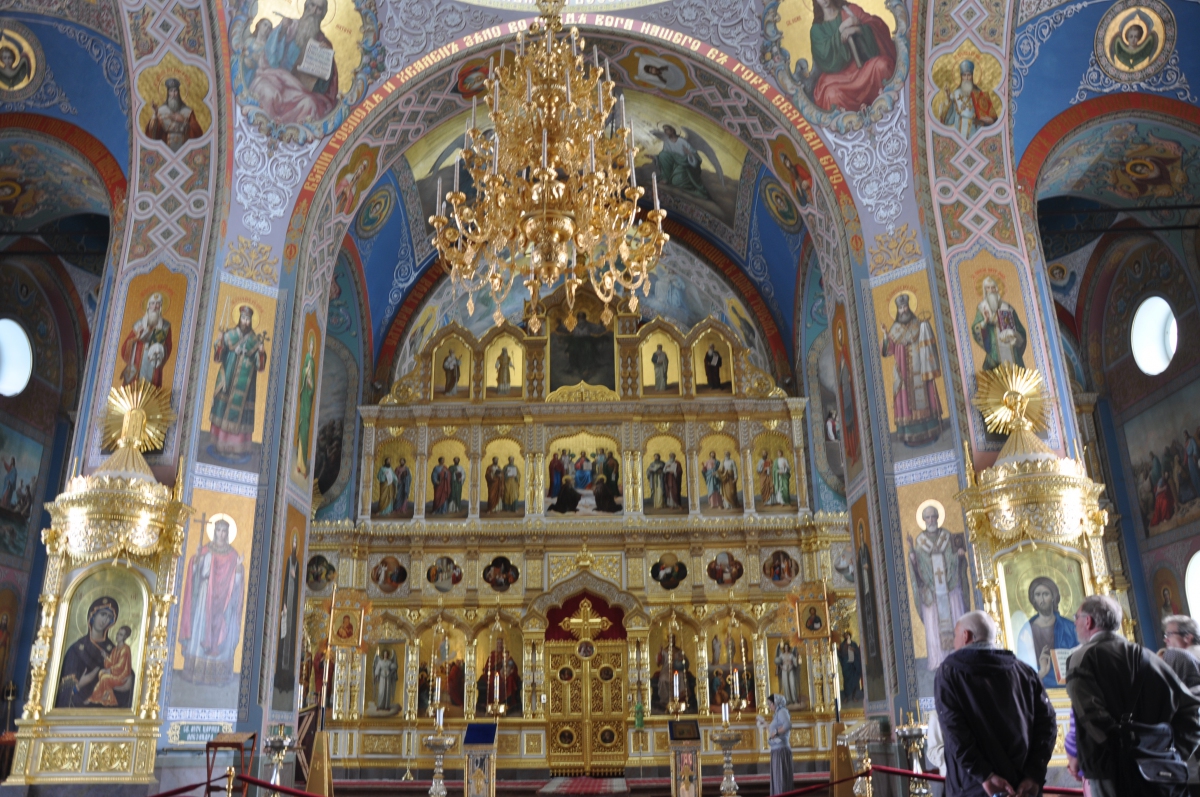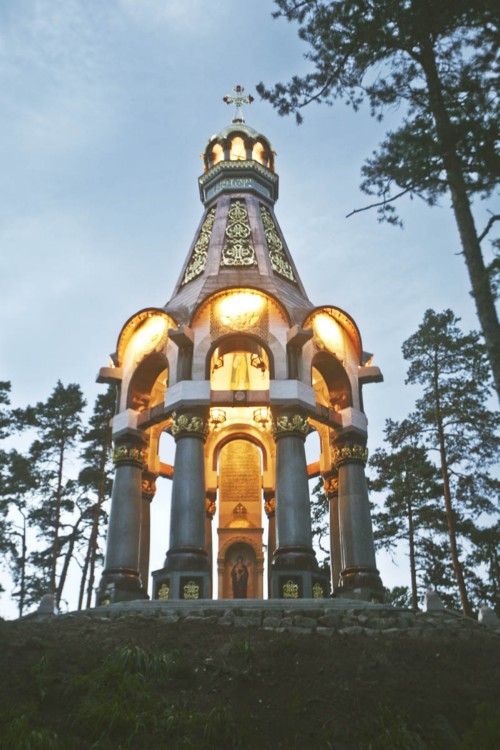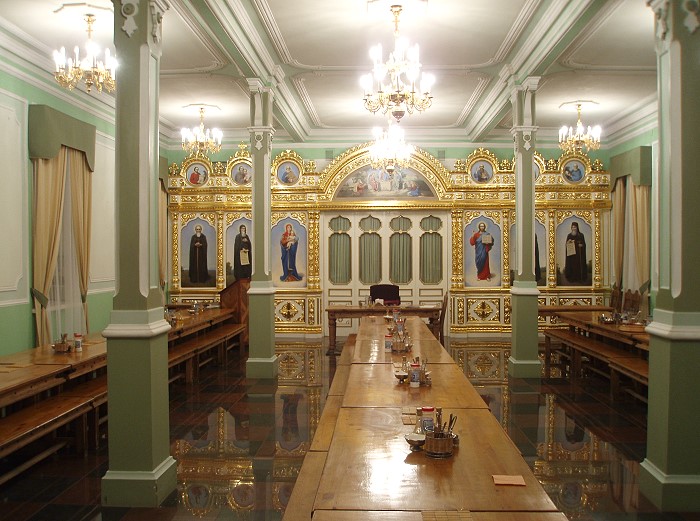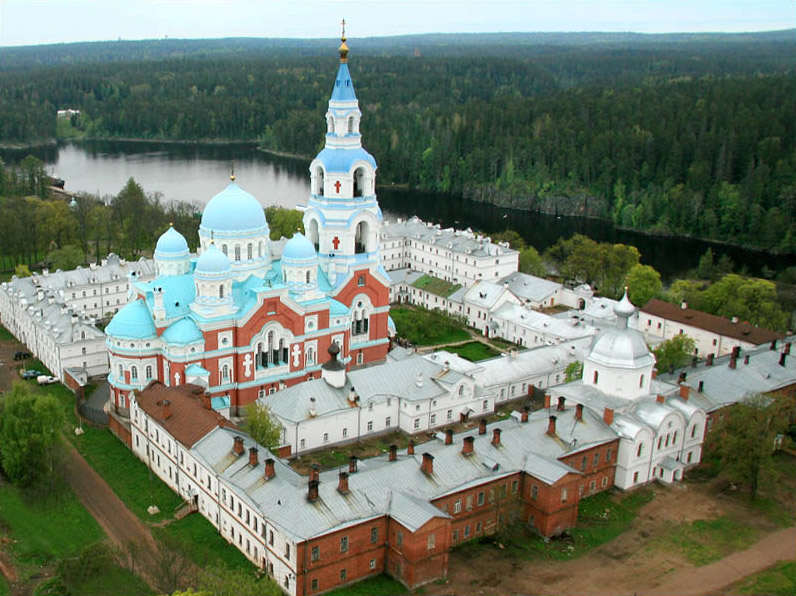The Valaam Monastery, or Valamo Monastery is a stauropegic Orthodox monastery in Russian Karelia, located on Valaam, the largest island in Lake Ladoga, the largest lake in Europe.
It is not clear when the monastery was founded. As the cloister is not mentioned in documents before the 16th century, different dates - from 10th to 15th centuries - have been expounded. According to one tradition, the monastery was founded by a 10th-century Greek monk, Sergius of Valaam, and his Karelian companion, Herman of Valaam. Heikki Kirkinen inclines to date the foundation of the monastery to the 12th century. Contemporary historians consider even this date too early. According to the scholarly consensus, the monastery was founded at some point towards the end of the 14th century. John H. Lind and Michael C. Paul date the founding to between 1389 and 1393 based on various sources, including the "Tale of the Valaamo Monastery," a sixteenth-century manuscript, which has the monstery founded during the archiepiscopate of Ioann II of Novgorod.
Whatever the truth may be, the Valaam monastery was a northern outpost of the Eastern Orthodox Church against pagans and, later, a western outpost against the Catholic Church from Tavastia, Savonia and Karelia Province.
The power struggle between Russians and Swedes pushed the border eastwards in the 16th century; in 1578 the monastery was attacked and numerous monks and novices were killed by the Lutheran Swedes. The monastery was desolate between 1611 and 1715 after another attack of the Swedes, the buildings being burnt to the ground and the Karelian border between Russia and Sweden being drawn through Lake Ladoga. In the 18th century the monastery was magnificently restored, and in 1812 it came under the Russian Grand Duchy of Finland.
The rebuilt church, now in Karelian/Zaonezh’e style, of Prophet Elijah’s skete on Lembos Island, ca. 10 km to the east of the main monastery, in the chain of islands extending towards the mainland in the east.
In 1917, Finland became independent, and the Finnish Orthodox Church became autonomous under the Ecumenical Patriarchate of Constantinople; previously, it had been a part of the Russian Orthodox Church. Valaam was the most important monastery of the Finnish Orthodox Church. The liturgic language was changed from Church Slavonic to Finnish and the liturgic calendar from the Julian to the Gregorian calendar. These changes led to bitter decade-long disputes in the monastic community of Valaam.




